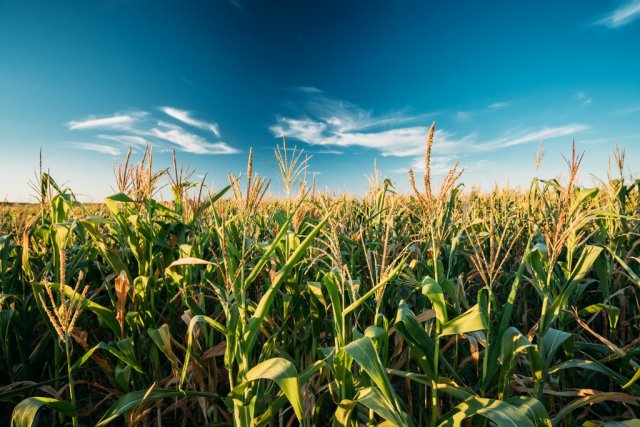Understanding the Impacts of Synthetic Nitrogen on Air and Water Quality Using Integrated Models
Published March 22, 2021

What does corn have to do with air pollution? Many of us don’t often consider how the food we eat - and the chemicals used to grow, package, or prepare it – can impact the air we breathe and the water we drink.
Synthetic nitrogen, now used extensively in conventional fertilizers, helps farmers produce higher yields to feed a growing world population. However, when this nitrogen is not fully utilized by the growing plants, they can be lost from the farm fields and negatively impact air and downstream water quality. This excess nitrogen can contribute to increased formation of ground-level ozone, higher amounts of climate changing greenhouse gases, and thinning of the protective ozone layer high in the Earth’s atmosphere. Excess nitrogen has also contributed to acid rain, polluted drinking water, and caused oxygen depletion and “dead zones” in water bodies, which causes serious harm to aquatic wildlife.
Over the last five years, EPA scientists have been working on combining advanced modeling technology to improve our understanding of how air and water quality are connected to agriculture and the nitrogen cycle. Dr. Yongping Yuan, an EPA hydrologist whose work focuses on the impacts of agricultural practices on water quality, says that modeling has some limitations, but provides a basis to explore mitigation options for reducing the environmental impact of nitrogen.
EPA scientists developed the Integrated Multi-Media Modeling System (IMS) which combines agricultural, atmospheric, and hydrological components to look more closely at how air and water pollution are produced through large-scale agricultural operations, particularly related to grain crops and livestock. This modeling system is being used to evaluate the impacts of air quality management policies, land use and land management practices, as well as the impacts of climate change on water quality.
The system integrates several powerful EPA and U.S. Department of Agriculture (USDA) models to allow scientists to examine and predict the activity of entire ecosystems and local atmospheric conditions in a specific region or watershed. It is available through the Fertilizer Emission Scenario Tool for CMAQ (FEST-C v1.4.1) Java-based interface.
The modeling system also helps scientists achieve more accurate and realistic predictions of the emissions of ammonia from synthetic nitrogen fertilizer, which contributes to the formation of fine particulate matter (PM2.5). Dr. Jon Pleim, an atmospheric scientist at EPA, emphasized the system’s potential for improving the accuracy of PM2.5 predictions by including ammonia, an important precursor of PM2.5. Ammonia is produced through the nitrogen cycle and has been historically difficult to capture in models until now.
“If you don’t have accurate ammonia emissions, then you’re going to have a hard time doing realistic predictions of PM2.5, which is one of the key air pollutants that EPA is concerned about,” he explains.
As the work on the modeling system progresses, researchers hope to find out more about the relationship between the atmosphere and water and how it impacts ecosystems.
Related Links:
The Fertilizer Emission Scenario Tool for CMAQ (FEST-C v1.4.1) is a Java-based interface system that facilitates the integration of agriculture, atmosphere, and hydrology simulations at large scales through the current release of the Spatial Allocator (SA v4.3.2) Raster Tools system.
